Day 226
2 hrs, 3 kms
If I had just gone back the way I came after I climbed Toubkal, it would've been a quick five hour trip to get back to Casablanca
. Now that I'm on the wrong side of the mountains, it's an unpredictable trip that could take me from 12 to 20 hours--and I have to be back at work tomorrow, so I'd better not waste a lot of time. I'd really like to continue exploring this valley all the way to the end, but that's not going to happen on this trip. In fact, it's not going to happen for a long, long time, as I'll be leaving Morocco permenantly in a few weeks.
Now I have another very good reason to come back here someday though.
I will get a quick start on exploring the valley. I've got to hike 7 or 8 kilometers down the road to catch collective transport to the main highway anyways, so I might as well add a couple more villages along the way. So early in the morning I'm off on my way.
This village where I stayed the night is the beginning of a 72 kilometer desert river civilization following a narrow valley all the way to Aoulouz, where it joins the Souss River, one of most important regions of Southern Morocco
. Of course there are similarities to the other desert river civilizations I've followed... the Draa River, Oued Melh to Ouarzazate, Dades, Amzrit, Ziz... But each one does have something unique and new to discover.
This civilization which I'll call the Aoulouz River Civilization has several special characteristics. One is the amazing irrigation system. Rather then limiting themselves to cultivating the narrow valley floor, the people here have cut away terraces high up the steep mountainsides, and worked a system of canals to reach these terraces, using just gravity. Yesterday I say a beautiful, high waterfall and figured it'd be a nice place for a videoclip, but when I reached it the waterfall had disappeared! It turns out it was just a canal high above that had its lock opened and closed.
The second interesting thing about the Aoulouz region is the way the houses are designed. They're made out of earth, as is typical in all the Atlas mountain civilizations, but these have something different: on the upper floors there's a wide open room, with a roof, but no wall in front, making it visible to anyone passing. It looks like it's an area for hanging up clothes etc.
What intrigues my about this is that typically Moroccan homes are very private. People don't want anyone outside seeing inside. It's deeply rooted in the culture. In some areas the houses are built around a sunlit courtyard with no windows facing the outside. But here people don't seem to mind outsiders being able to observe them in their mundane daily tasks. Is there a deeper meaning to this? I'm not sure. Later I ask a colleague who is fromt his area, but he's not able to answer.
1527. The Other side of the Atlas
Thursday, June 06, 2013
 Irhil, Souss-Massa-Drâa, Morocco
Irhil, Souss-Massa-Drâa, Morocco
Other Entries
-
1301517. The Giant Heads
Mar 2177 days prior Aday, Moroccophoto_camera29videocam 0comment 0
Aday, Moroccophoto_camera29videocam 0comment 0 -
131Post-visit (0096) A Classy Finish
Mar 2177 days prior Tafraoute, Moroccophoto_camera31videocam 0comment 0
Tafraoute, Moroccophoto_camera31videocam 0comment 0 -
1321518. Back up to the Rif (Mor 514)
May 0136 days prior Tala Lakran, Moroccophoto_camera20videocam 0comment 0
Tala Lakran, Moroccophoto_camera20videocam 0comment 0 -
1331519. The Two Sides of the Straits of Gibraltar
May 0136 days prior Oued Aliane, Moroccophoto_camera11videocam 0comment 0
Oued Aliane, Moroccophoto_camera11videocam 0comment 0 -
134Post-visit: Ksar Sghir (0341) This Ancient Port
May 0136 days prior Ksar es Sghir, Moroccophoto_camera27videocam 0comment 0
Ksar es Sghir, Moroccophoto_camera27videocam 0comment 0 -
135Post-visit: Tanger (0090) Seeking for Ibn Battuta
May 0136 days prior Tangier, Moroccophoto_camera14videocam 0comment 0
Tangier, Moroccophoto_camera14videocam 0comment 0 -
1361520. A Beautiful Reservoir (Mor 516)
May 0235 days prior Dchicha, Moroccophoto_camera18videocam 0comment 0
Dchicha, Moroccophoto_camera18videocam 0comment 0 -
1371521. Borderland Forest (Mor 517)
May 0235 days prior Ain Jir, Moroccophoto_camera21videocam 0comment 0
Ain Jir, Moroccophoto_camera21videocam 0comment 0 -
138Post-visit: (0339) Swimming in Tamud
May 0334 days prior Restinga Smir, Moroccophoto_camera16videocam 0comment 0
Restinga Smir, Moroccophoto_camera16videocam 0comment 0 -
1391522. On Down the Casablanca Coast
May 0829 days prior Sidi Rahal, Moroccophoto_camera8videocam 0comment 0
Sidi Rahal, Moroccophoto_camera8videocam 0comment 0 -
1401523. A Scrappy Side Trip
May 0928 days prior Had Soualem, Moroccophoto_camera2videocam 0comment 0
Had Soualem, Moroccophoto_camera2videocam 0comment 0 -
141Post-visit: The Boskoura Forest
May 1720 days prior Bouskoura, Moroccophoto_camera9videocam 0comment 0
Bouskoura, Moroccophoto_camera9videocam 0comment 0 -
142Post-visit: A little Add on
May 2314 days prior Tit Mellil, Moroccophoto_camera0videocam 0comment 0
Tit Mellil, Moroccophoto_camera0videocam 0comment 0 -
143Post-visit: An Unknown Natural Bridge
May 2413 days prior Sale, Internationalphoto_camera12videocam 0comment 0
Sale, Internationalphoto_camera12videocam 0comment 0 -
1441524. One Final Quest
Jun 042 days prior Imlil, Moroccophoto_camera11videocam 0comment 0
Imlil, Moroccophoto_camera11videocam 0comment 0 -
1451525. The Courthouse of the Spirits
Jun 042 days prior Armad, Moroccophoto_camera70videocam 0comment 0
Armad, Moroccophoto_camera70videocam 0comment 0 -
1461526. Reaching Toubkal
Jun 051 day prior Imhilene, Moroccophoto_camera61videocam 0comment 0
Imhilene, Moroccophoto_camera61videocam 0comment 0 -
1471527. The Other side of the Atlas
Jun 06 Irhil, Moroccophoto_camera5videocam 0comment 0
Irhil, Moroccophoto_camera5videocam 0comment 0 -
1481528. Peaceful Morning Stroll
Jun 06later that day Tanmirselt, Moroccophoto_camera10videocam 0comment 0
Tanmirselt, Moroccophoto_camera10videocam 0comment 0 -
1491529. The Long Loop Home
Jun 06later that day Mezguimmat, Moroccophoto_camera5videocam 0comment 0
Mezguimmat, Moroccophoto_camera5videocam 0comment 0 -
1501530. Organizing my first Group Hike
Jun 115 days later Tinitine, Moroccophoto_camera58videocam 0comment 0
Tinitine, Moroccophoto_camera58videocam 0comment 0 -
1511531. My Last Moroccan Hike
Jul 0125 days later Agadir n’Igourramene, Moroccophoto_camera17videocam 0comment 0
Agadir n’Igourramene, Moroccophoto_camera17videocam 0comment 0 -
152Post-visit: Casablanca Five Years On
Jul 0529 days later Casablanca, Moroccophoto_camera27videocam 0comment 0
Casablanca, Moroccophoto_camera27videocam 0comment 0 -
153Alps
Jul 1236 days later Breno, Italyphoto_camera301videocam 0comment 0
Breno, Italyphoto_camera301videocam 0comment 0 -
154Temp Photos
Jul 1337 days later Edolo, Italyphoto_camera179videocam 0comment 0
Edolo, Italyphoto_camera179videocam 0comment 0 -
155Photos
Jul 1741 days later Sondrio, Italyphoto_camera207videocam 0comment 0
Sondrio, Italyphoto_camera207videocam 0comment 0 -
156Temp Photos
Jul 2145 days later Lecco, Italyphoto_camera275videocam 0comment 0
Lecco, Italyphoto_camera275videocam 0comment 0 -
157Temp photos
Jul 2549 days later Vicenza, Italyphoto_camera215videocam 0comment 0
Vicenza, Italyphoto_camera215videocam 0comment 0 -
158Temp photos
Jul 2751 days later Padua, Italyphoto_camera103videocam 0comment 0
Padua, Italyphoto_camera103videocam 0comment 0 -
159Temp Photos
Jul 3155 days later Rimini, Italyphoto_camera118videocam 0comment 0
Rimini, Italyphoto_camera118videocam 0comment 0 -
160Temp photos
Aug 0762 days later Perugia, Italyphoto_camera284videocam 0comment 0
Perugia, Italyphoto_camera284videocam 0comment 0 -
161Temp Photos
Aug 0762 days later Urbino, Italyphoto_camera186videocam 0comment 0
Urbino, Italyphoto_camera186videocam 0comment 0 -
162Photos
Aug 1065 days later Tuscania, Italyphoto_camera198videocam 0comment 0
Tuscania, Italyphoto_camera198videocam 0comment 0 -
163Photos
Aug 1267 days later Florence, Italyphoto_camera297videocam 0comment 0
Florence, Italyphoto_camera297videocam 0comment 0 -
164Photos
Aug 1368 days later Lucca, Italyphoto_camera118videocam 0comment 0
Lucca, Italyphoto_camera118videocam 0comment 0 -
165Photos
Aug 1469 days later Lucca, Italyphoto_camera115videocam 0comment 0
Lucca, Italyphoto_camera115videocam 0comment 0

 Irhil, Souss-Massa-Drâa, Morocco
Irhil, Souss-Massa-Drâa, Morocco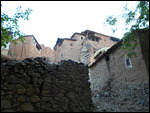
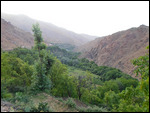



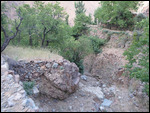
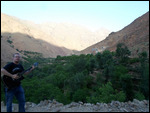
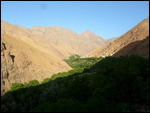
2025-05-23